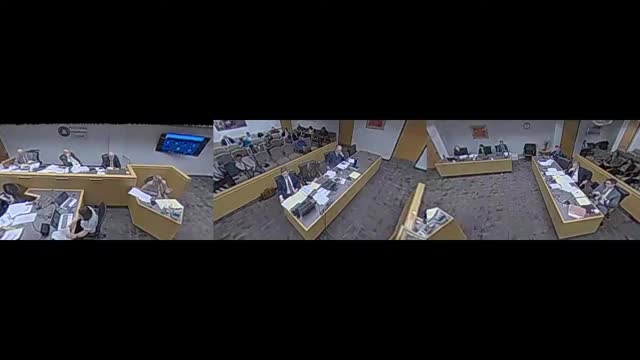Wildfire Risk Analysis Reveals Utah's Low Property Damage Estimates Compared to Other States
March 23, 2025 | Utah Public Service Commission, Utah Subcommittees, Commissions and Task Forces, Utah Legislative Branch, Utah
This article was created by AI summarizing key points discussed. AI makes mistakes, so for full details and context, please refer to the video of the full meeting. Please report any errors so we can fix them. Report an error »

In a pivotal government meeting held on March 23, 2025, in Utah, discussions centered around the implications of wildfire risks and their impact on insurance rates, particularly in the context of Rocky Mountain Power's (RMP) rate case. The meeting, part of the Phase III Hearing on DAO Docket Issues, highlighted the complexities of calculating wildfire risks across various states, with a focus on Utah's relatively low risk compared to its western counterparts.
Key discussions revealed that while Utah is reported to have the lowest average costs associated with potential wildfires among 13 western states, the calculations and methodologies used to arrive at these conclusions were scrutinized. Experts referenced data from Verisk, a leading risk assessment firm, to support their claims. However, questions arose regarding the accuracy and applicability of this data, particularly in how it was interpreted and presented in the context of insurance premiums.
One significant point of contention was the differentiation between the likelihood of wildfires occurring and the potential damage they could cause. Experts clarified that while Utah may have lower costs associated with wildfire damage, this does not necessarily correlate with the frequency of wildfires. The conversation underscored the importance of understanding both the probability of wildfires and the associated property damage when assessing risk.
Additionally, the meeting addressed the methodology of summing regional risks, with experts emphasizing that combining data from different states requires careful consideration to avoid overestimating overall risk. This nuanced understanding is crucial for stakeholders, including insurers and policymakers, as they navigate the complexities of wildfire risk assessments.
As the meeting concluded, the implications of these discussions were clear: accurate risk assessment is vital for determining fair insurance rates and ensuring that communities are adequately prepared for potential wildfire threats. The outcomes of this hearing will likely influence future insurance policies and regulatory decisions in Utah and beyond, as stakeholders seek to balance risk management with economic considerations.
Key discussions revealed that while Utah is reported to have the lowest average costs associated with potential wildfires among 13 western states, the calculations and methodologies used to arrive at these conclusions were scrutinized. Experts referenced data from Verisk, a leading risk assessment firm, to support their claims. However, questions arose regarding the accuracy and applicability of this data, particularly in how it was interpreted and presented in the context of insurance premiums.
One significant point of contention was the differentiation between the likelihood of wildfires occurring and the potential damage they could cause. Experts clarified that while Utah may have lower costs associated with wildfire damage, this does not necessarily correlate with the frequency of wildfires. The conversation underscored the importance of understanding both the probability of wildfires and the associated property damage when assessing risk.
Additionally, the meeting addressed the methodology of summing regional risks, with experts emphasizing that combining data from different states requires careful consideration to avoid overestimating overall risk. This nuanced understanding is crucial for stakeholders, including insurers and policymakers, as they navigate the complexities of wildfire risk assessments.
As the meeting concluded, the implications of these discussions were clear: accurate risk assessment is vital for determining fair insurance rates and ensuring that communities are adequately prepared for potential wildfire threats. The outcomes of this hearing will likely influence future insurance policies and regulatory decisions in Utah and beyond, as stakeholders seek to balance risk management with economic considerations.
View full meeting
This article is based on a recent meeting—watch the full video and explore the complete transcript for deeper insights into the discussion.
View full meeting

